Strongman Vs Bodybuilding: Which Path to Choose?
Author:
Reviewed by:
(21 years of Oly Lifting experience)
Unlock your full potential by engaging with our experts and community! Have questions about your fitness journey or looking for expert advice on weightlifting techniques? Don’t hesitate — leave a comment below and Sergiy Osipchyk will provide a personalized answer and insights to help you reach your goals.
Torokhtiy is reader-supported. Some links are affiliate links, and we may earn a commission at no extra cost to you. See our disclosure page for details.
Being two popular training styles among those opting to train with weights, we’ll reveal the differences between strongman vs bodybuilder to help you define which is perfect for you. Gaining muscle mass or being an athletic-built bodybuilder is up to you to decide what training style is more efficient for your sports goals.
When comparing a strongman vs bodybuilder it may seem they possess the same qualities. Although, the key difference between these two training types is that a strongman focuses mainly on strength development, while bodybuilders train to increase muscle size and make them as lean as possible.
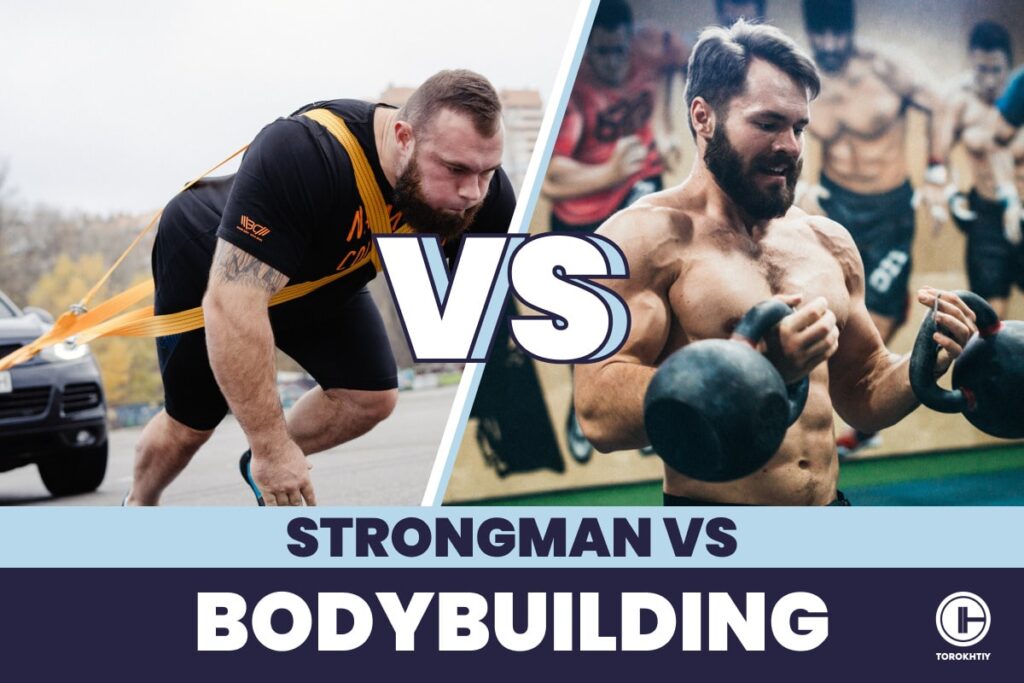
What is Strongman?
Before revealing the difference between strongman vs bodybuilder, let’s describe the peculiarities of each training style, outlining its benefits and drawbacks.
Strongman refers to functional strength training, which focuses on developing general strength and conditioning. Strongman events test athletes’ capabilities to lift, carry, pull, and throw heavy items. The key purpose of such training is to build muscle mass and develop power and endurance predominantly.
As usual, the Strongman workout includes conventional lifts, e.g., deadlifts, squats, and presses as well as such movements as Atlas stones, Farmer’s carry, log press, car walk, keg toss, etc. Thus, it requires superb strength, power, and movement coordination, additionally core stability and grip strength.
You may like it: Effective Strongman Training Program To Gain Max Strength
The success in strongman training involves the development of the adaptations. That means the body responds to the progressive physical overload, which involves boosting core strength, proprioception, and power.
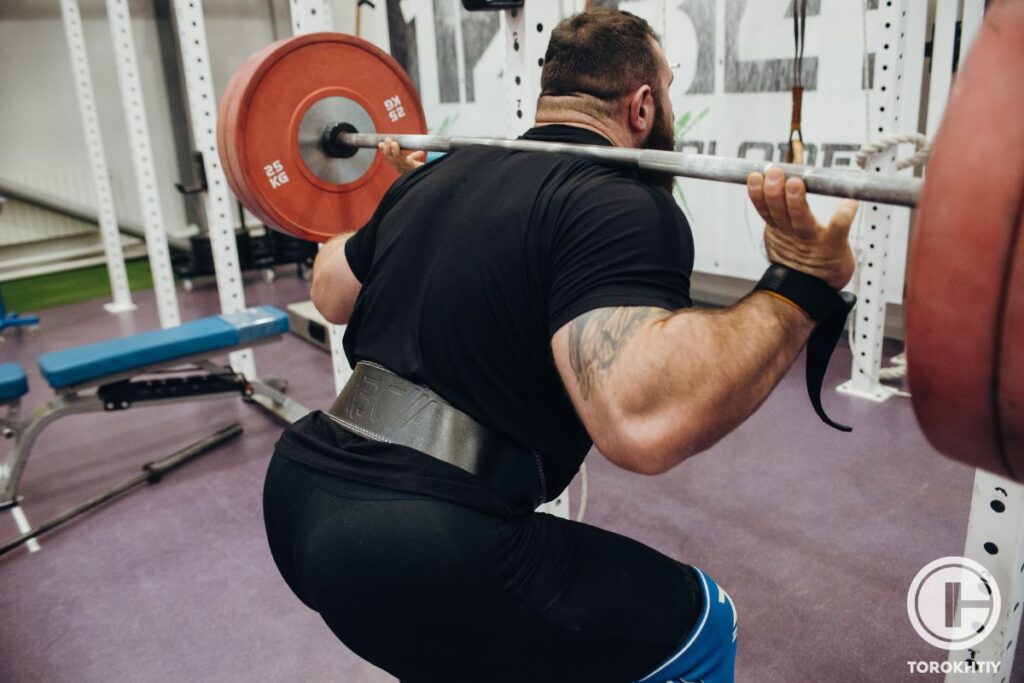
Strongman training can help to build muscle mass and strength, which can improve physical fitness and performance capabilities in other sports.
Due to the numerous challenging movements athletes will improve their conditioning, agility, grip strength, and endurance. Additionally, Strongman training promotes mental resilience and self-confidence to overcome your limitations and achieve new strength goals.
What is Bodybuilding?
Bodybuilding is a form of training, which concentrates mostly on building muscle mass and strength via performing targeted weight lifting and resistance training. This type of workout prioritizes aesthetic muscular development rather than power increase.
It facilitates physical performance, growing bone density, improves mental health, and reduces the risk of chronic diseases.
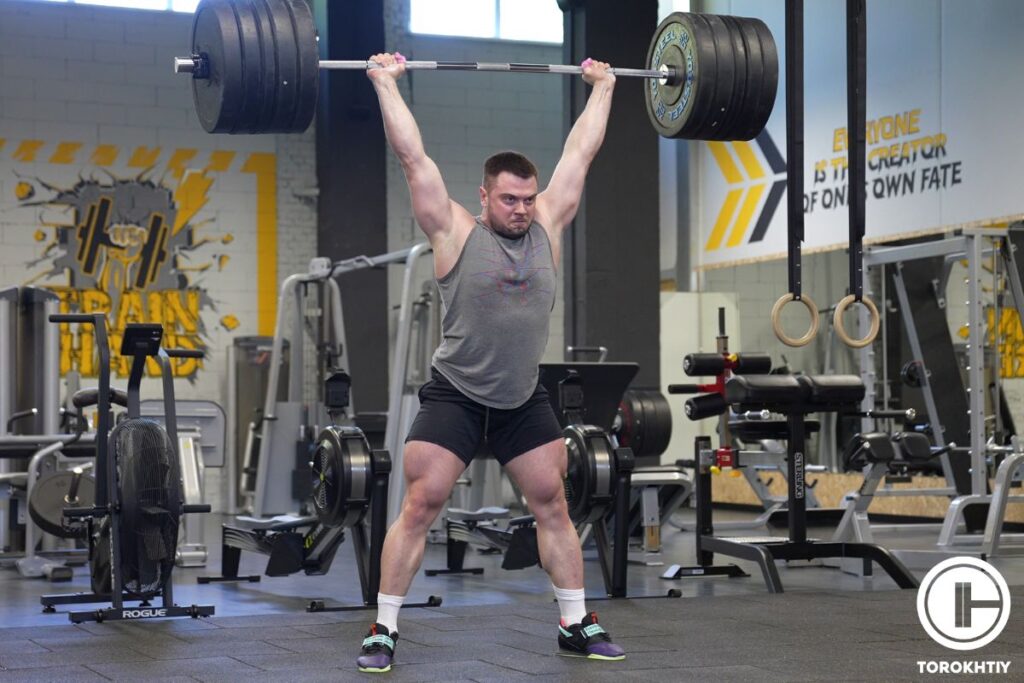
To achieve the desired body shape and performance, individuals should follow a balanced diet enriched with sufficient protein, carbohydrates, healthy fats, and other essential nutrients for muscle growth.
Bodybuilding is relatively subjective as the winner of the competition depends purely on a judge’s decision on who has the best physique. Muscle symmetry and size, posing, and leanness all play a crucial role. For a bodybuilder, the key goal is to show as little body fat and as much muscle as possible.
Follow us!

Free!
Get a 2-week Weightlifting Program as a bonus for the subscription to kickstart your training plan!

Free!
Strongman vs Bodybuilder: In-detail Comparison
Let’s outline the difference between strongman and bodybuilder, since lots of beginners in strength training get confused about these two notions and get confused about their key features.
1. Physique
Speaking about body composition, strongmen look much taller, wider, and dense, even more than advanced athletes. They are larger and have more body fat than bodybuilders. Strongmen are concerned with how much weight they can lift and carry, and having six-pack abs doesn’t matter to them.
On the contrary, bodybuilders strive to get a balanced physique maximizing muscular development and then dropping body fat and becoming lean.
2. Training style and used equipment
Bodybuilding workout develops hypertrophy and muscle definition, while Strongman training focuses on building power, endurance, and maximum strength. The back squat and conventional deadlift were defined as the most commonly used squat and deadlift.
Strongman athletes tend to include hypertrophy training, with maximal strength and power training. The majority also perform speed repetitions with submaximal loads in the squat and deadlift.
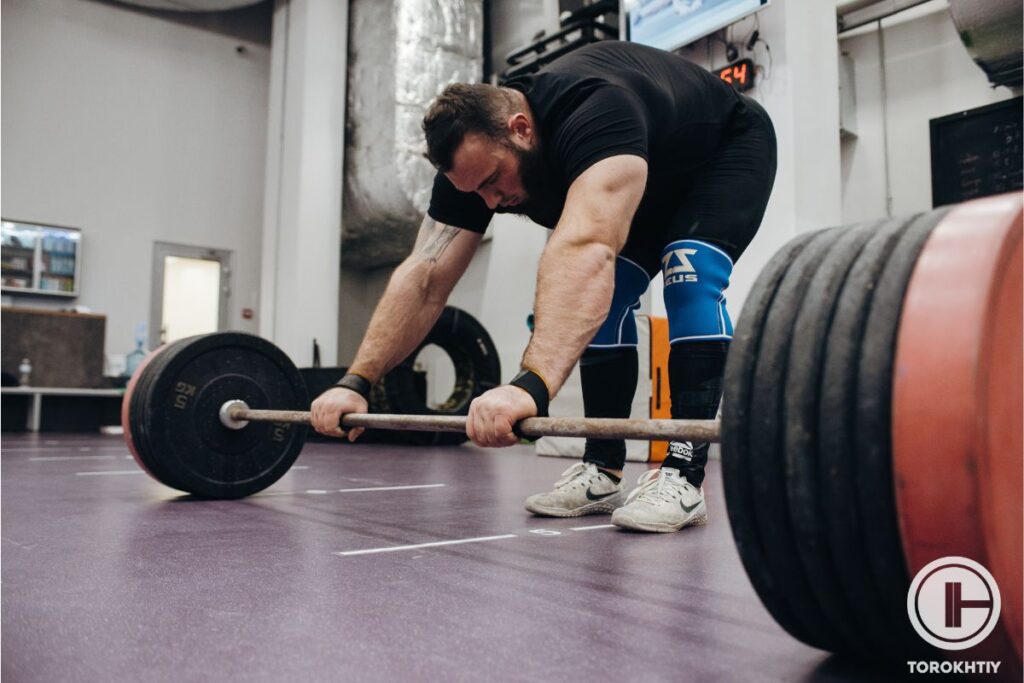
The same refers to the equipment an athlete uses during each type of workout. Bodybuilding requires using barbells, dumbbells, and various training machines. Strongman drills involve large bulky objects such as stones, logs, kegs, and tires to perform specific exercises.
3. Training program selection
The main difference between bodybuilding and strongman lies in its focus: the first targets aesthetic goals, while the latter – functional strength and power. Bodybuilders opt for isolation exercises for specific muscle groups, targeting the biceps, triceps, chest, back, and abs. These exercises will create a lean body emphasizing muscle definition and size.
Strongmen should challenge not only brute strength, but also develop explosiveness. Incorporating power moves, i.e., clean and jerk and snatch will help to build total body explosiveness, so strength will increase as well.
While strongman exercises are predominantly compound movements targeting multiple muscle groups at a time. These include movements like deadlift, squat, and overhead press. In addition, Strongman events also include non-barbell exercises such as tire flips and farmer’s carries which challenge the whole body.
4. Nutrition & Diet Plan
Bodybuilders require a strict nutritional regime, while Strongman athletes rely more on whole unprocessed foods. As the basis of the bodybuilder’s nutrition, the conventional dietary recommendation involves following a diet consisting of 40% carbs, 30% protein, and 30% fat.
Although, keep in mind that this ratio may vary depending on an individual’s body mass, overall health state, and fitness goals.
The body requires carbs for glycogen, which is what muscle burns for energy during movement. While amino acids deriving from protein also help to rebuild muscle following tough training.
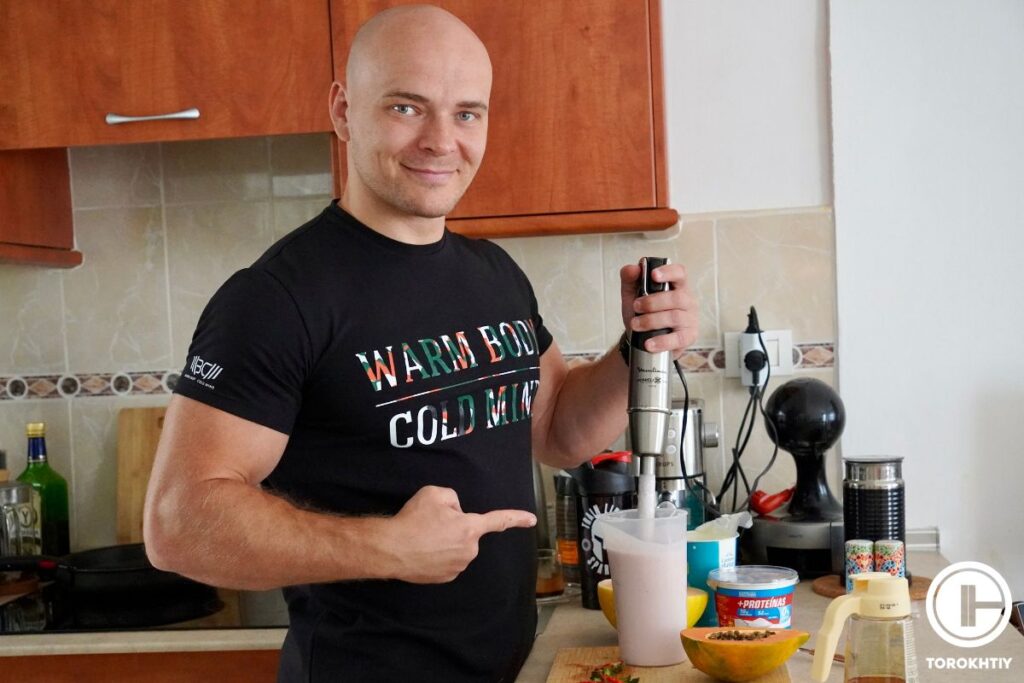
For strongmen, putting on size, building muscle, and fueling the body isn’t as easy as a pie. Depending on the size of the athlete, some athletes can eat up to 8,000-10,000 calories a day.
So, there are two states – anabolic and catabolic. To remain anabolic and grow muscles an athlete should consume more calories than they burn per day. This leaves us with a net-positive caloric surplus, enabling muscles to grow.
A strongman mostly eats for gaining strength and with this muscle size will come. The key to healthy quality muscle mass and weight gain is to eat big and consistently throughout the day following a structured meal plan.
5. Cardio capabilities
Well-trained strongmen have great cardio-specific abilities as they should be ready to carry multiple 100-300 lb sandbags and pull logs over a specific distance in a race. Bodybuilders practice low-intensity cardio as part of their body mass cut.
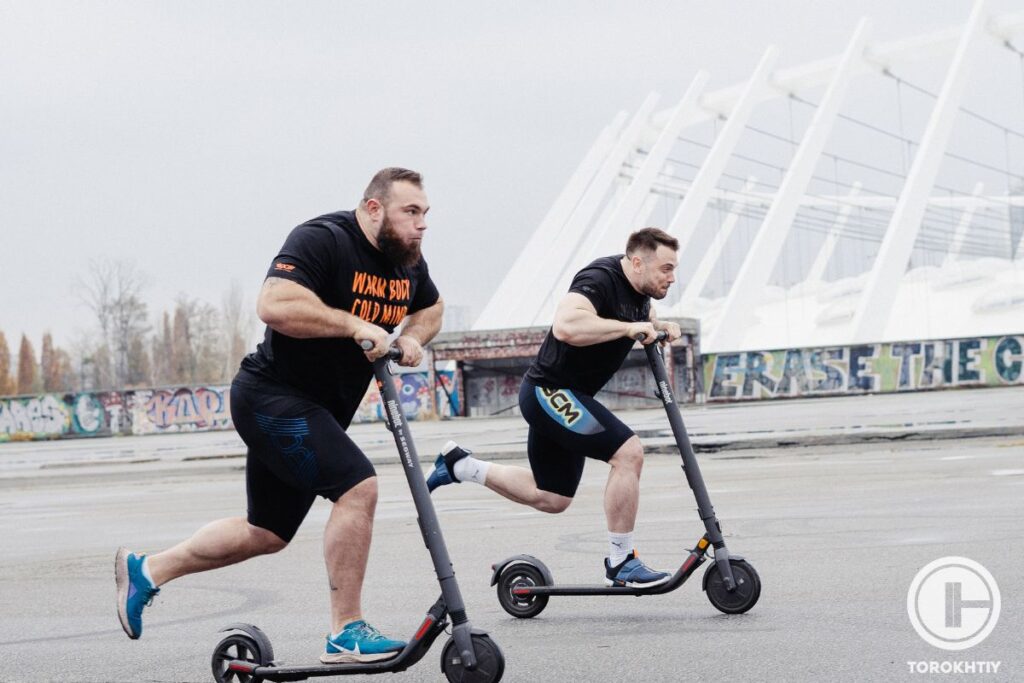
Strongman vs Bodybuilder: Summary
Everything depends on what kind of activity – bodybuilder vs strongman – you prefer. If you opt for bodybuilding, then you should become highly dedicated to diet, minimize fat gain when building muscle mass, and minimize muscle loss when losing body fat. During the competition period, you should be extremely disciplined to reach your peak form.
On the other hand, if you prefer working out with different equipment and don’t want to track your body mass and sculpted body, then strongman training is a perfect choice for you.
Pros/cons of Being a Strongman
Positives:
Could be better:
Pros/cons of Being a Bodybuilder
Bodybuilding is the best sports discipline to make your body proportionally shaped and fit, simultaneously building muscle mass and strength.
Positives:
Could be better:
Strongman vs Bodybuilder: When to Choose Each?
To summarize all the above-mentioned information, we can finally conclude what athletes, bodybuilders or strongmen, will manage to build up muscular body and raw power, and who will get the lean muscles.
So, the Strongman workout’s goal is to incorporate compound and functional movement patterns, using several major muscle groups at the same time. The key purpose is to gain muscle mass to become more powerful and endurant to work with extreme weights.
While the purpose of bodybuilding is to display perfect muscle mass, muscle symmetry, and definition for the overall aesthetic.
Conclusion
When choosing between strongman vs bodybuilder, you should define what type of workout is closer to your training style and fitness intentions. Still, no matter which sport you choose, you should be ready to lift heavy weights and perform high-volume workouts to build muscle.
Also Read:
- Strong Woman Competitions: History & Current State
- 10 Strongest Women in the World: From the Origin Till Now
- Strongman Vs Bodybuilding: Which Path to Choose?
- Why are Strongman Fat: Organism Adaptations, Proper Diet & Training
- 12 Strongman Exercises to Build Strength (+Workout Example)
- Ultimate 12 Week Strongman Program for Max Strength and Endurance
- 3 Day Strongman Program – Crank Up Your Strength
- Strongman Physique: What Is A Strongman’s Body Type?
References:
- Paul W Winwood, John B Cronin, Logan R Posthumus. Strongman vs. traditional resistance training effects on muscular function and performance. Journal of Strength and Conditioning Research, No.29(2), (2015): 429-39.
- Paul W Winwood, Justin W L Keogh, Nigel K Harris. The strength and conditioning practices of strongman competitors. Journal of Strength and Conditioning Research, No.25(11), (2015): 3118-28.
- William J Kraemer, Lydia K Caldwell, Emily M Post. Body Composition in Elite Strongman Competitors. Journal of Strength and Conditioning Research, No.34(12), (2020): 3326-3330.
- Pascal Bauer, Alan Majisik, Benedikt Mitter. Body Composition of Competitive Bodybuilders: A Systematic Review of Published Data and Recommendations for Future Work. Journal of Strength and Conditioning Research, No.37(3), (2023): 726-732.
- Jaqueline L Lenzi, Emerson L Teixeira, Guilherme de Jesus. Dietary Strategies of Modern Bodybuilders During Different Phases of the Competitive Cycle. Journal of Strength and Conditioning Research, No.35(9), (2021): 2546-2551.
- Philip E Mosley. Bigorexia: bodybuilding and muscle dysmorphia. European eating disorders review : the journal of the Eating Disorders Association, No. 17(3), (2009):191-8.
- Photos made by Torokhtiy Media Team.
Why Trust Us?
With over 20 years in Olympic weightlifting, strength training, nutrition coaching, and general fitness our team does its best to provide the audience with ultimate support and meet the needs and requirements of advanced athletes and professional lifters, as well as people who strive to open new opportunities and develop their physical capabilities with us.
By trusting the recommendations of our certified experts in coaching, nutrition, and sports training programming, as well as scientific consultants, and physiotherapists, we provide you with thorough, well-considered, and scientifically proven content. All the information given in the articles concerning workout programming, separate exercises, and athletic performance, in general, is based on verified data.
The product testing process is described in more detail here.
Author: Sergiy Osipchyk
Strongman Coach,
Former coach of Oleksiy Novikov and Pavlo Nakonechnyy
Strongman Experience: 10+ years
Sergiy has been involved in strength sports since he was 10 years old, and already started coaching when he was just 15 years old.
He helps clients of any age and experiences achieve results using an individual approach, daily process control, consultation and training knowledge and techniques, total experience is more than 20,000 individual training sessions.
Sergiy has trained a roster of renowned PRO strongman athletes including Oleksii Novikov, Pavlo Nakonechnyy and many other.
Reviewed by: Oleksiy Torokhtiy
Olympic Weightlifting Champion, PhD in Sport Science
Best Results: Snatch – 200 kg,
C&J – 240 kg
Oleksiy Torokhtiy is a professional athlete boasting 20 years of experience in Olympic weightlifting. With multiple European and World titles under his belt, he has showcased his prowess in two Olympic Games (Beijing 2008 and London 2012). Upon concluding his illustrious career, Oleksiy dedicated himself to coaching. By 2022, he had conducted over 200 weightlifting seminars worldwide. He is the visionary behind an international sportswear and accessories brand known for its motto, “Warm Body Cold Mind.” Additionally, he is an esteemed author and the creator of a series of training programs and eBooks.




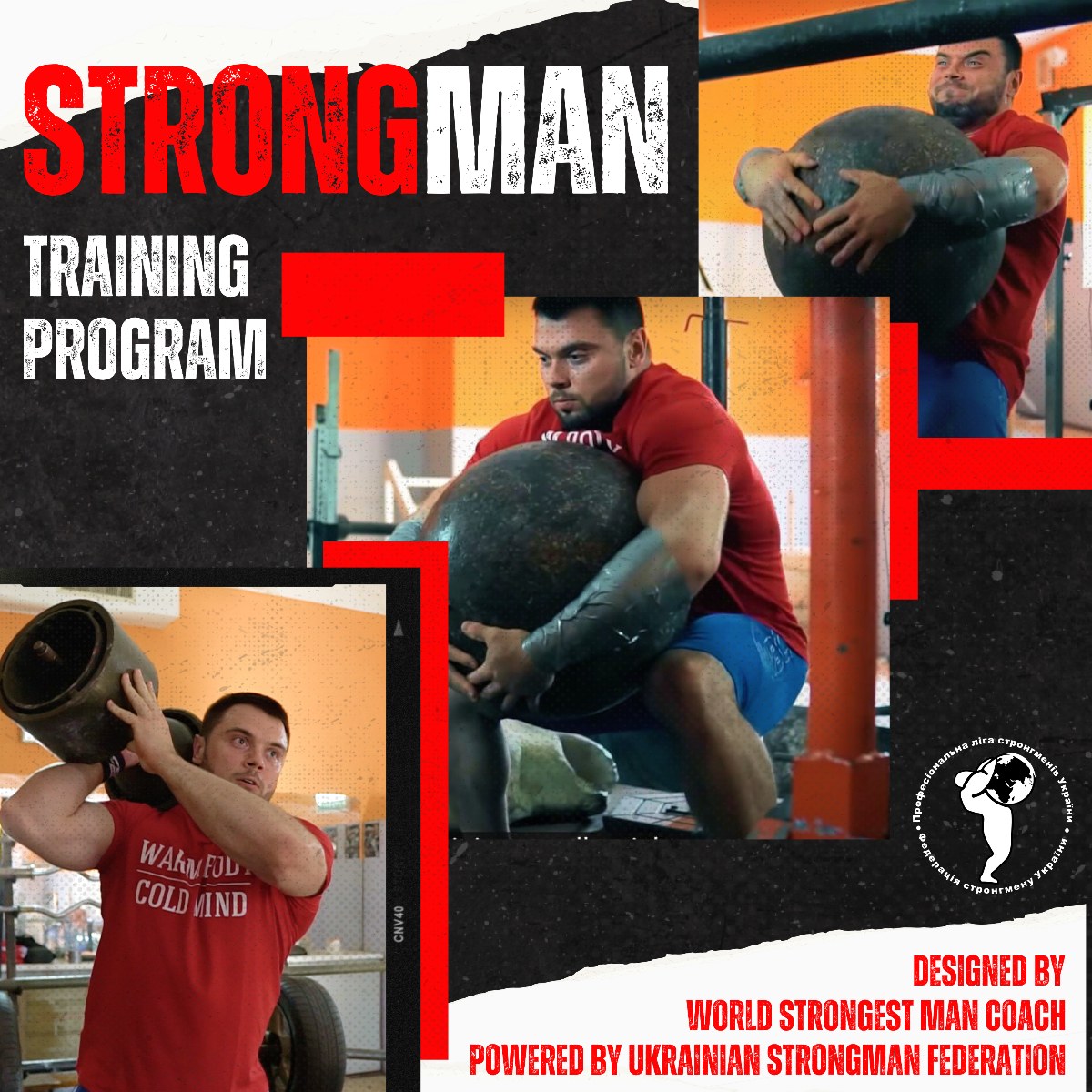
Still have questions after reading our article? Unlock your full potential by engaging with our experts and community! Don’t hesitate — leave a comment below and Sergiy Osipchyk will provide a personalized answer and insights to help you reach your goals.